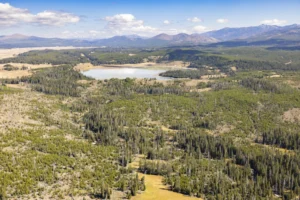Yellowstone Chief Marks Five Years on the Job (Part 1)
Superintendent Cam Sholly discusses peaks and valleys of his national park tenure
- Published In: Other News & Features
- Last Updated: Nov 01, 2023
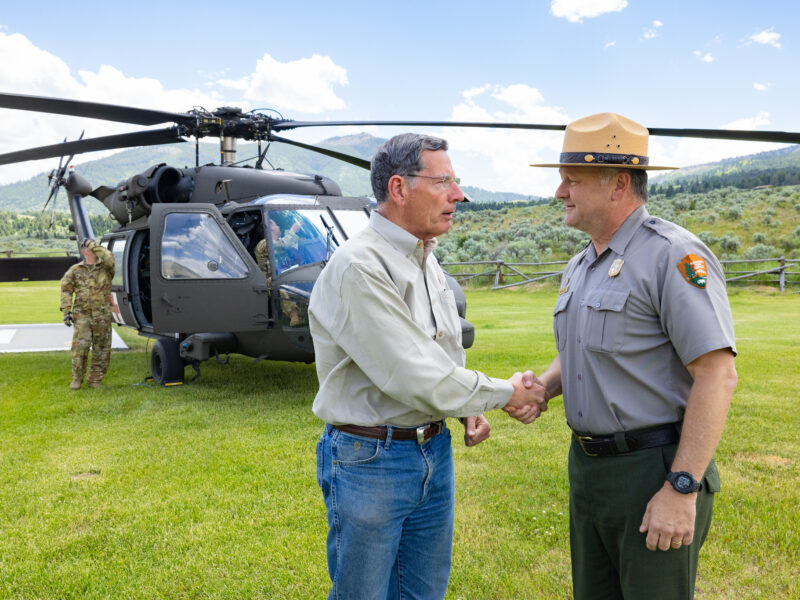
Sen. John Barrasso (R-Wyo.) meets with Yellowstone National Park Superintendent Cam Sholly in July 2022 to tour parts of the park damaged by historic flooding. (Courtesy photo from National Park Service)
By Ruffin Prevost
Special to the Wyoming Truth
CODY, Wyo. — Yellowstone National Park Superintendent Cam Sholly began his tenure in the park in October 2018. In the five years since, he has dealt with historic closures due to the COVID-19 pandemic in 2020, devastating floods in 2022 and record visitation of 4.8 million people in 2021.
The scope, size and diversity of issues at play in Yellowstone mean a wide range of individuals and groups have varying opinions on how the park is managed. But in Cody and other gateway communities, many are giving Sholly high marks for managing in difficult circumstances.
Former U.S. Senator Alan K. Simpson, who has worked with 11 Yellowstone superintendents since entering politics in 1965, called Sholly “an ideal public servant in every respect.”
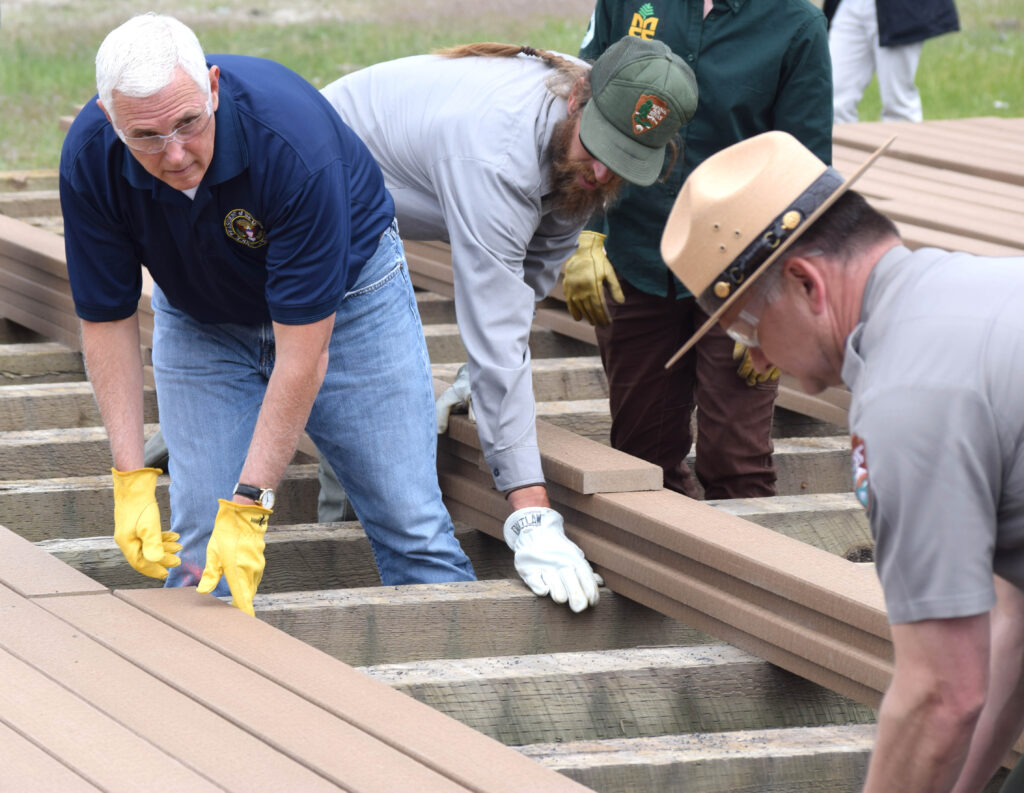
“When the floods came a year ago, he just moved,” Simpson said. “He said: ‘Get out of the way. We’ve got a highway to repair. We’ve got to take care of Gardiner [Montana] and we’ve got to take care of the other cities next to the park.’ That takes guts. It’s called taking responsibility. If more people took responsibility like Cam Sholly down in the bureaucracy, the world would be a better place.”
In an exclusive, two-part interview with the Wyoming Truth, Sholly reflects on some of the challenges of the past five years and looks ahead at priorities for the future. What follows are excerpts from the conversation, edited for length and clarity.
You’re not new to Yellowstone. You attended high school in the area. You worked in maintenance and flipped burgers at Mammoth. You’ve spent time in Yellowstone’s backcountry. How have those experiences served you in returning as superintendent?
Sholly: Yellowstone has always been a really important place to me. As you mentioned, I went to Gardiner High School for half my junior year and my senior year. I went into the military after high school and came back and got into a backcountry maintenance and trail crew here. Those are some formative years in regard to continuing the connection with Yellowstone’s backcountry. I was assigned to the Thorofare for those two summers. So that’s about as deep in the backcountry as you can get in the lower 48. I think in many ways, areas like that represent the real park, in that, the majority of this park, almost no one sees. To get that connection with this place — and the other parks, for that matter — over my youth, I think was really important in guiding me into the future . . . .
Other than the floods and COVID, have there been aspects of this job that were particularly challenging or that surprised you?
Sholly: The job’s the biggest privilege and the biggest pain in the ass at the same time. It’s an incredible place, and an incredible team and incredible partners. But it’s a grind. Anybody that works here gets a lot of enjoyment out of protecting this place. But at the same time, everybody’s got an opinion. And a lot of time, those opinions are divergent. Most of the time, that is because people care about it, whatever issue it is. So, we’re doing our best to reconcile those divergent opinions and make the best decisions for the future.
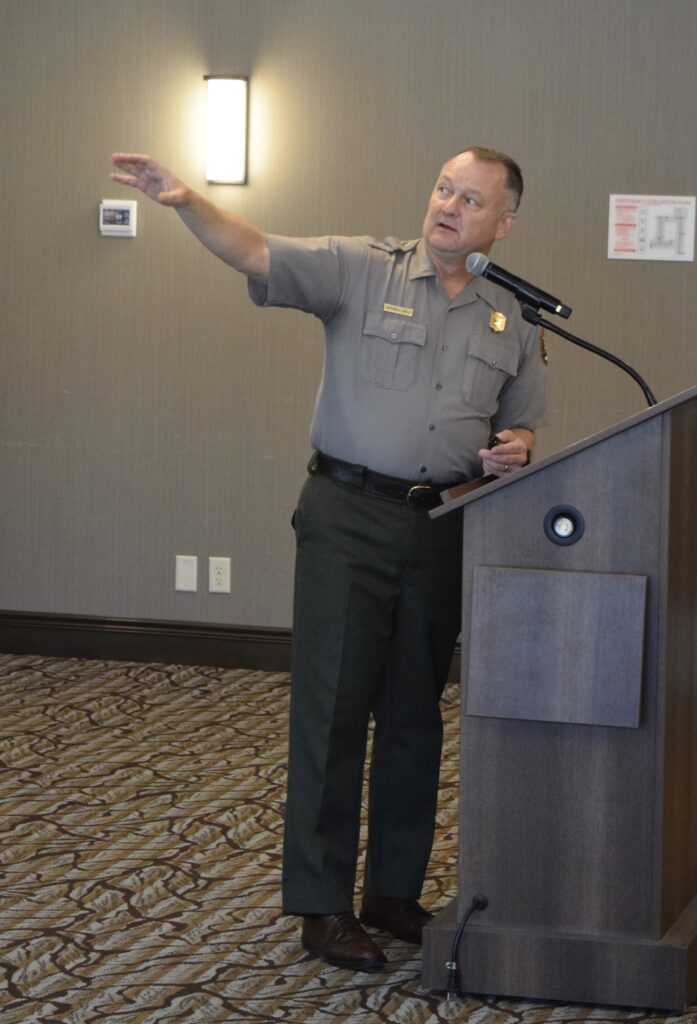
How do you view some of the big, seemingly intractable problems in the park? Are there issues you try and solve while you’re here? Or do you take a long-term approach in knowing some things will need to be addressed by others down the road?
Sholly: Well, we’re only here for a short amount of time, so you do the best job you can in the time frame you have. It’s not like [prior Superintendent] Dan Wenk leaves and I start over on a bunch of stuff. Or like I’m going to leave and some new person is going to start over. If you keep in mind that the ultimate goal is to protect this place and maintain and improve the health and condition of the ecosystem, there are so many different things that go into that.
Dan made some really good progress in bison [management] when he was here. We’ve carried a lot of that forward. We had a record amount of bison here last year in the population. That’s not necessarily popular with everyone, you know. We’re putting a record amount of money into native fish restoration. That’s something Dan was doing also.
So you continue to look for opportunities. There might be things that, for one reason or another, he had more of an opportunity to move forward. Or [earlier Superintendents] Suzanne Lewis or Mike Finley had than I have. Or maybe I hit a window where I can move things forward more. But you don’t know what’s coming out of left field on a regular basis—litigation or other things that kind of change your plan. So looking for continual progress in these key areas — whoever the superintendent is — is important.
. . . We’ve put a huge dent in housing in just the last three or four years. We’re going to continue on, but you know there will always be something ongoing. So whoever comes in here next, I would look for them to just at least keep that momentum moving in the right direction.
Bison management is a complex topic. Are there aspects of how you are required to manage bison that you wish the public understood better? Or are there options that you wish the Park Service had to better manage bison?
Sholly: People just need to understand where we were back the ‘90s, when we were killing pretty much every single bison that went across that [park] boundary. That was a [Montana] state and a Park Service thing. So there’s been a significant amount of progress over the last 20 years in bison management. It may not always seem like it. But we’ve got expanded tolerance that the state has authorized in the north and west sides back in 2015. We’ve got this bison conservation transfer program, which we just doubled the capacity of last year.
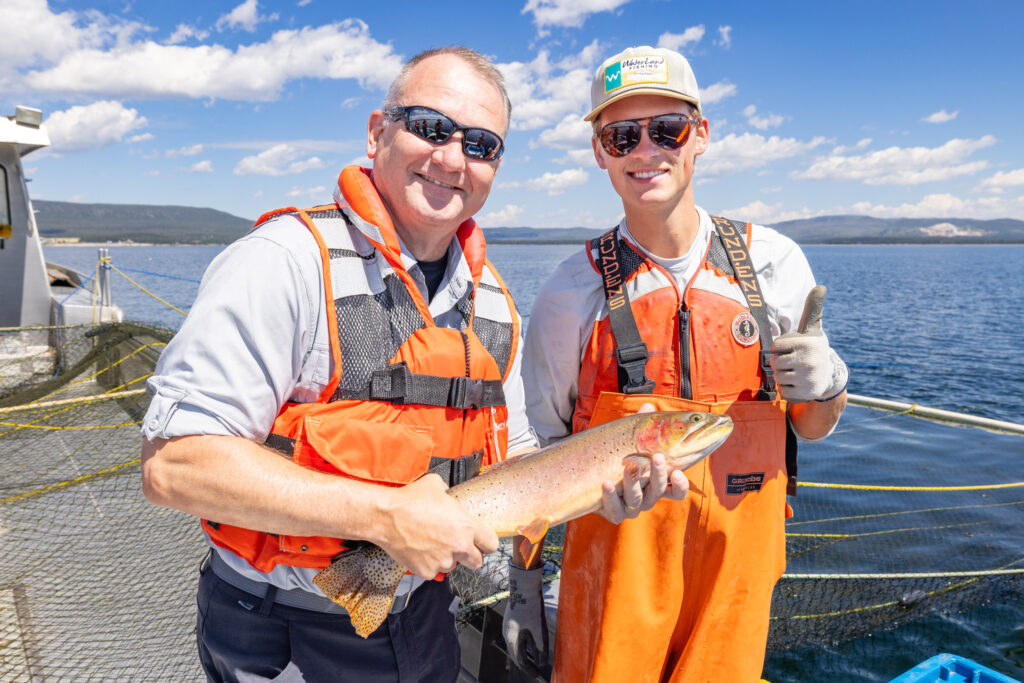
The population is dynamic. You’re not going to manage bison in Yellowstone to any single one number. It’s going to be a range. And I think it’s important people understand that. We’ve shipped a record low amount of bison to slaughter in the last four or five years. I think we shipped 1,500 bison to slaughter, or somewhere like that, in 2008. So we’re relying more heavily on harvest by tribes and state hunters and the bison conservation transfer program.
Some people expect that Yellowstone always will figure out ways to accommodate more visitors. Is that a reasonable expectation?
Sholly: I don’t know about always. Say you get to 10 million visitors? But 5 million, 7 million? What’s the number where you truly do not have the road mileage, parking capacity, impacts on resources, staff, infrastructure and visitor experience such that you’ve got to do something differently? We’re not close to that right now.
But it’s not a bad thing to talk about. It doesn’t mean we’re going to do it. But should we wait until we get to 7 million before we start having a conversation? No. Some of this might be distribution. If 50% of the visitation comes in through one entrance, and two other entrances get 5% of the visitor entries, do you really need a park-wide action? But I think it can be a constructive and open dialogue to have.
There’s no other place on earth like this, where you’ve got this much wildlife and this many people in the same spot. You can go plenty of places and see more wildlife, and plenty of places and see more people. But you do not have anywhere [else] where you have this many people and this diversity in population of wildlife in the same spot at the same time.
Check back for part two, coming soon.






